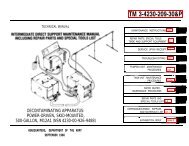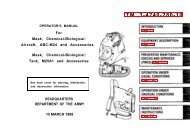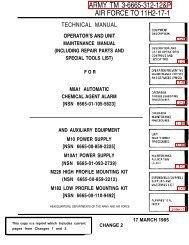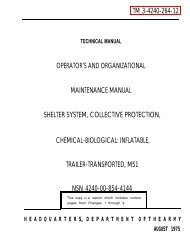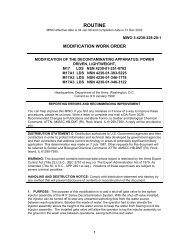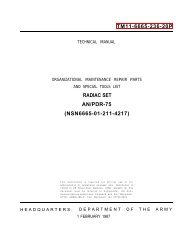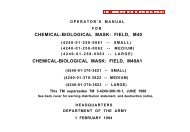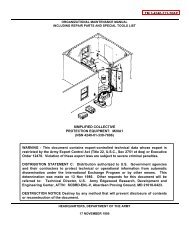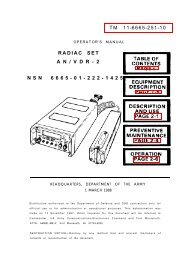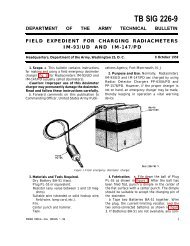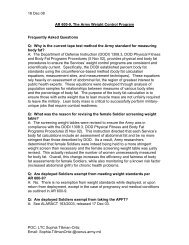LEADER DEVELOPMENT FOR AMERICA'S ARMY
LEADER DEVELOPMENT FOR AMERICA'S ARMY
LEADER DEVELOPMENT FOR AMERICA'S ARMY
You also want an ePaper? Increase the reach of your titles
YUMPU automatically turns print PDFs into web optimized ePapers that Google loves.
Figure 4. Leader Development Process<br />
Additionally, this feedback allows the senior and subordinate leaders to design appropriate reinforcement or remediation<br />
programs. Reinforcement nurtures continued success. Through the after–action review (ACTIVE AND RESERVE<br />
COMPONENT) process, the senior leaders help and guide subordinate leaders to self–discover where they did a good<br />
job and what factors contributed to that success. Applied to leadership performance, this process encourages leaders to<br />
apply effective actions in similar situations. Leadership AARs can also specify remedial actions for subordinate leaders<br />
that should correct their weaknesses and bring them up to stated standards. Throughout this developmental leadership<br />
process, subordinate leaders should receive guidance and updates on the status of their progresses.<br />
Assessment feedback can include one–on–one verbal discussions, letters, notes, counseling forms, command inspection<br />
reports, certification programs, peer and subordinate comments, and leadership AARs. Ideally, the senior leader will<br />
help the subordinate develop an action plan that identifies the SKBs that need reinforcement or remediation and the<br />
action needed to enhance or correct leader performance.<br />
After many feedback opportunities, senior leaders should conduct a comprehensive counseling session with the<br />
subordinate leader. Counseling should summarize a series of assessments that compare observations about subordinates<br />
against known standards. Senior leaders should use these counseling sessions to develop recommendations for overall<br />
improvement strategies. Senior leaders should plan these sessions so that they cover no new information, while<br />
providing subordinates with a rating. An evaluation usually follows the counseling session.<br />
An evaluation is a document, permanent record of performance, knowledge, and capabilities covering a specified<br />
period. It is the formal rating of past performance. The evaluation is the cumulative result of previous assessments,<br />
feedback, and reinforcement or remediation efforts. Reinforcement and remediation should continue upon conclusion of<br />
8 DA PAM 350–58 • 13 October 1994




